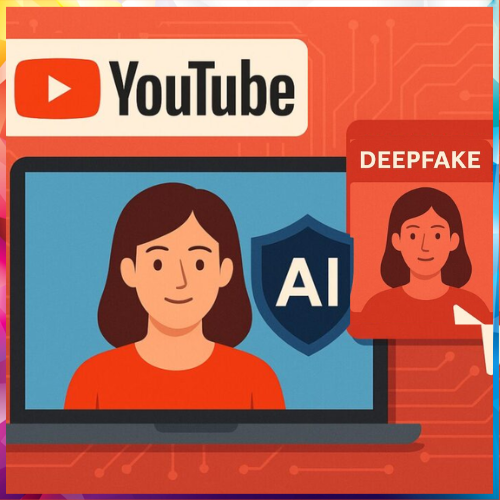
YouTube has taken a groundbreaking step in tackling one of the most pressing challenges in the digital era — the misuse of AI-generated deepfakes. With the launch of its AI-driven Likeness Detection Tool, the platform is setting new standards in digital identity protection and responsible AI governance.
Exclusively available to creators in the YouTube Partner Program, the tool enables users to identify and request removal of videos that mimic their face or voice without consent. Built into YouTube Studio under a new “Likeness” tab, it requires creators to verify their identity through photo ID and selfie video verification, reinforcing authenticity before enabling detection access.
What makes this launch significant is its scale and transparency. The tool’s architecture mirrors YouTube’s Content ID system—but instead of protecting copyrighted music or video, it protects human likeness and biometric identity. Users retain control, with data scanning automatically paused if they choose to opt out.
The rollout follows extensive pilots with the Creative Artists Agency (CAA) and comes amid growing incidents of AI-driven impersonation, such as the recent cloning of YouTuber Jeff Geerling’s voice for unauthorized product promotions. By deploying this system globally, YouTube is positioning itself as the first major platform to integrate AI-powered likeness verification at scale.
Analysts view this initiative as a strategic move toward building a more accountable digital ecosystem. The platform’s proactive adoption aligns with broader policy efforts like the NO FAKES Act in the U.S., which aims to criminalize deceptive digital replicas of real people.
Beyond policy compliance, the tool addresses deeper issues of digital ethics and user trust. In an age when generative AI can fabricate hyper-realistic faces, voices, and even personalities, YouTube’s model demonstrates how platform-led self-regulation can balance innovation with accountability.
Experts believe this step could redefine content authenticity standards across social media and entertainment industries. As deepfake detection becomes a frontline defense, YouTube’s Likeness Detection Tool marks a pivotal moment — signaling that the age of AI impersonation can be countered with AI integrity.
Ultimately, the move underscores YouTube’s evolving mission: protecting creators’ identities, strengthening user trust, and setting a global precedent for AI transparency and ethical digital media.
See What’s Next in Tech With the Fast Forward Newsletter
Tweets From @varindiamag
Nothing to see here - yet
When they Tweet, their Tweets will show up here.





























